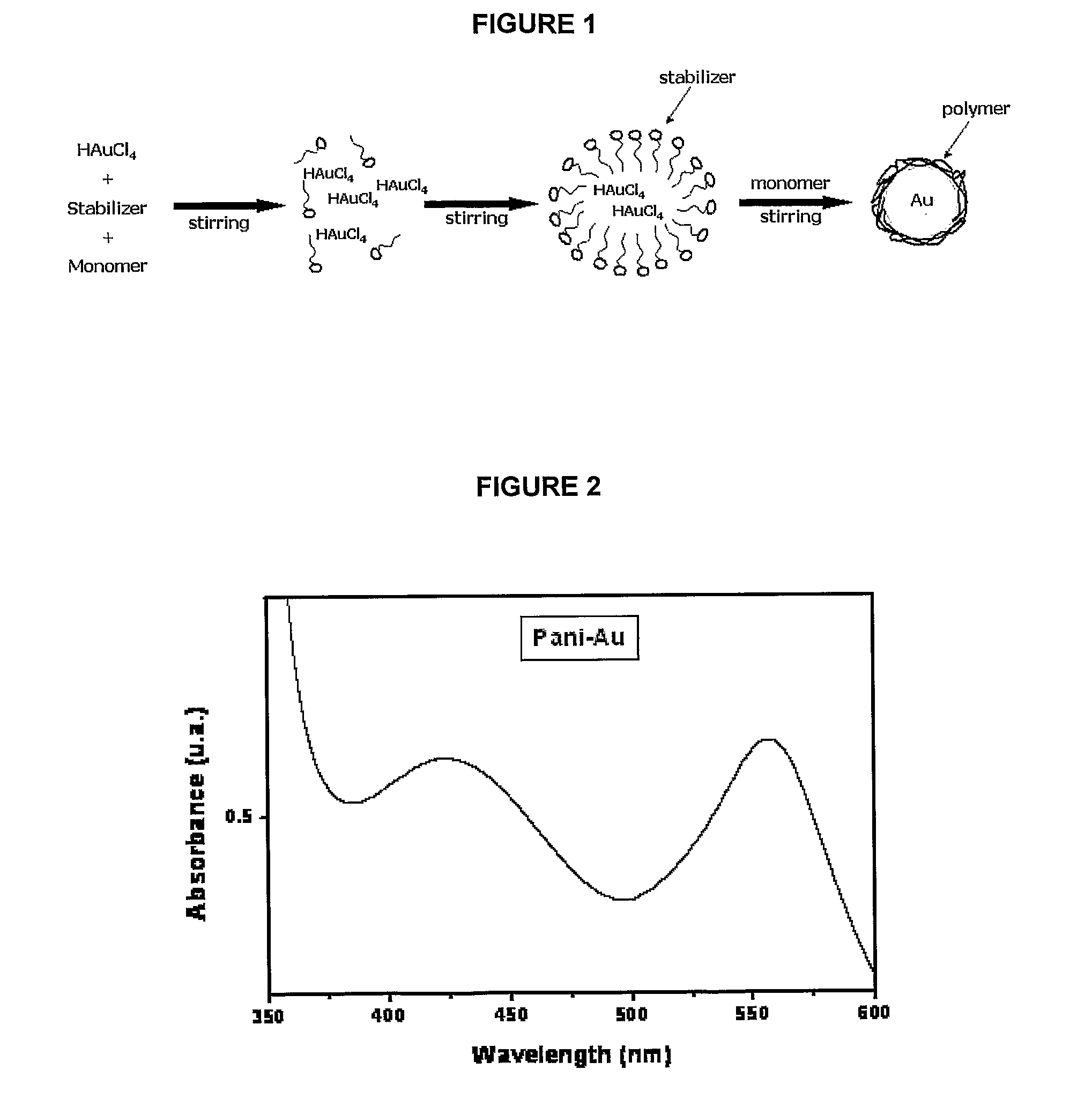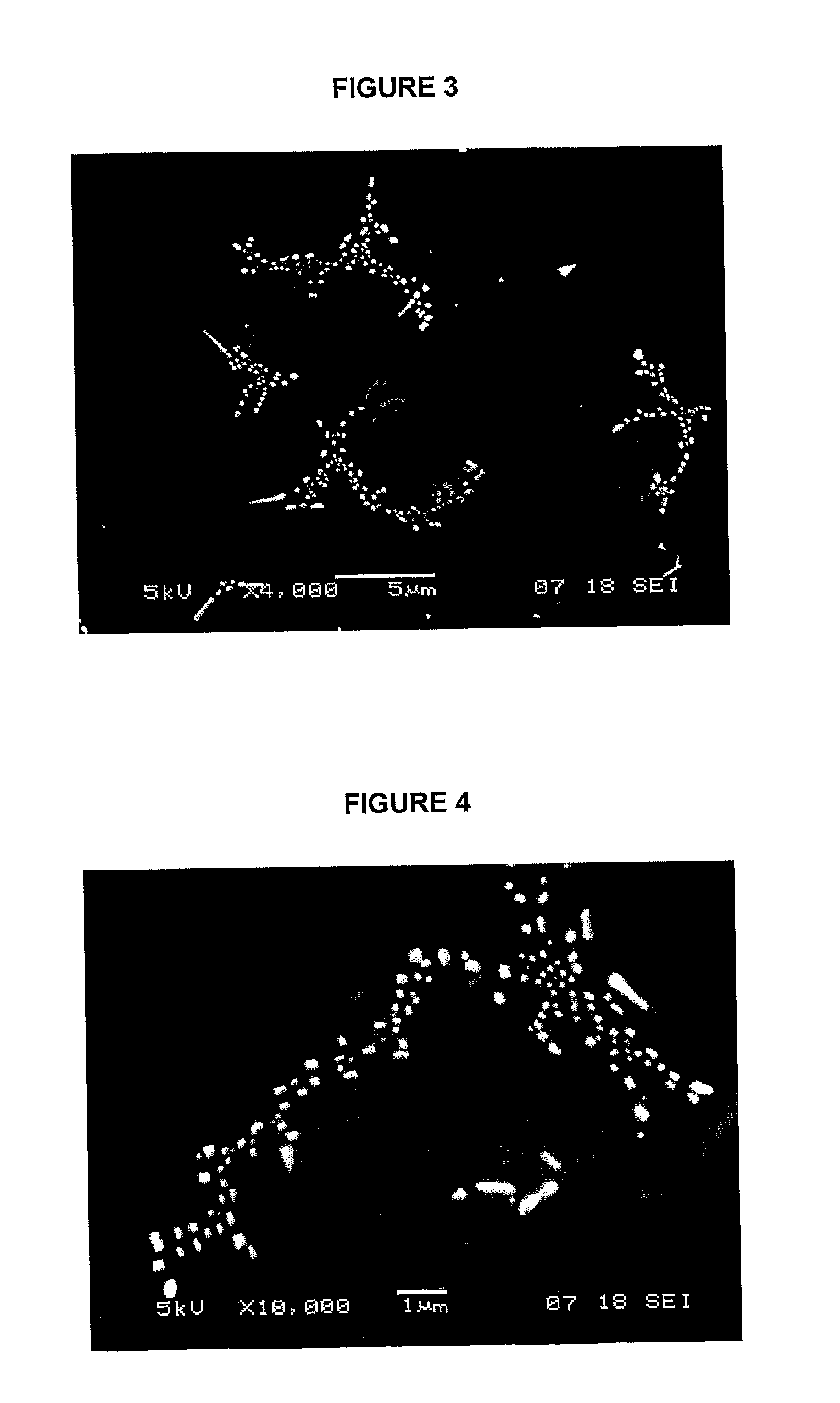Fluorescent nanoparticle composites themselves, process for the preparation of such composites, and use in rapid diagnosis systems with affinity to biological molecules
- Summary
- Abstract
- Description
- Claims
- Application Information
AI Technical Summary
Benefits of technology
Problems solved by technology
Method used
Image
Examples
example 1
Synthesis and Characterization of the Nanoparticles
example 1.1
Preparation of the Nanoparticles
[0062]The preparation of nanoparticles was performed (see scheme in FIG. 1) in a round bottom glass flask containing ethanol (20 mL) and the compounds: aniline (Ani-C6H5NH2) (0.030 mol / L), 3-mercaptopropyl-trimethoxy-silane (MPS-C6H16O6SSO (6.46×10−2 mol / L) and HAuCl4.xH2O (0.81 mmol / L), which were subsequently added and subject to energetic agitation (1,100 rpm). Aniline (Ani-C6H5NH2) was acquired from VETEC (Brazil) and only used after distillation in a Kugelrohr apparatus. The other compounds were bought from Aldrich Co. (USA), and had at least 99% degree of purity. All subsequent experiments were performed in the 48 hours time interval after the mixtures.
example 1.2
Characterization of the Nanoparticles
[0063]Photoluminescence properties were measured by use of a quartz cuvette (1 cm and 5 mL) in a PC1 (ISS, USA) spectrofluorimeter at (20±1)° C. The samples were monitored at different pH values by use of two luminescence matrices: (1) in the 200 to 360 nm excitation range and emission in the 370 to 600 nm interval; and (2) in the 270 to 330 nm excitation range and emission in the 280 to 600 nm interval. Morphological analyses were performed by scanning electron microscopy (SEM), by use of a JSM-5900 (JEOL, Japan) electron microscope. The samples were placed atop a glass substrate and fixed by a carbon tape. After this, the samples were covered by a thin gold layer by use of a sputtering (BalTec SCD 050). The size of the particles was determined by a light-scattering method by use of a Zetasizer Nano-ZS90 instrument (Malvern).
PUM
| Property | Measurement | Unit |
|---|---|---|
| Digital information | aaaaa | aaaaa |
| Digital information | aaaaa | aaaaa |
| Nanoscale particle size | aaaaa | aaaaa |
Abstract
Description
Claims
Application Information
 Login to View More
Login to View More - R&D
- Intellectual Property
- Life Sciences
- Materials
- Tech Scout
- Unparalleled Data Quality
- Higher Quality Content
- 60% Fewer Hallucinations
Browse by: Latest US Patents, China's latest patents, Technical Efficacy Thesaurus, Application Domain, Technology Topic, Popular Technical Reports.
© 2025 PatSnap. All rights reserved.Legal|Privacy policy|Modern Slavery Act Transparency Statement|Sitemap|About US| Contact US: help@patsnap.com



